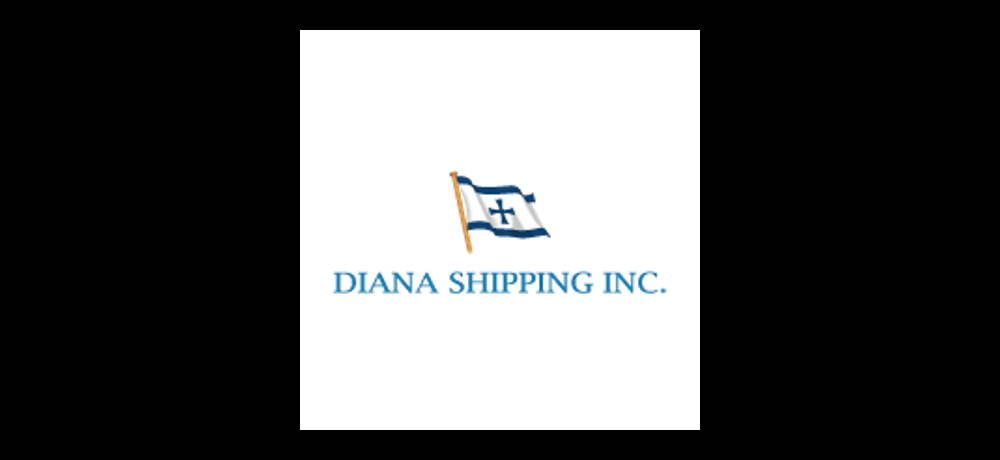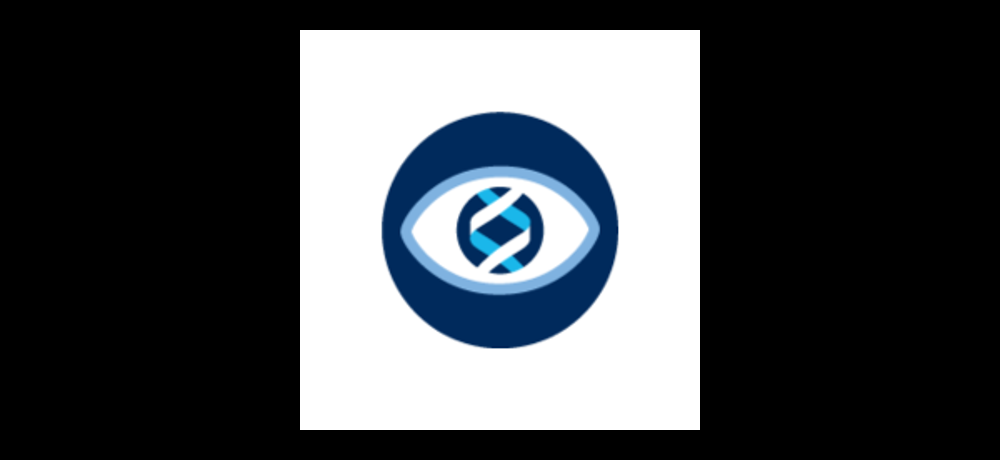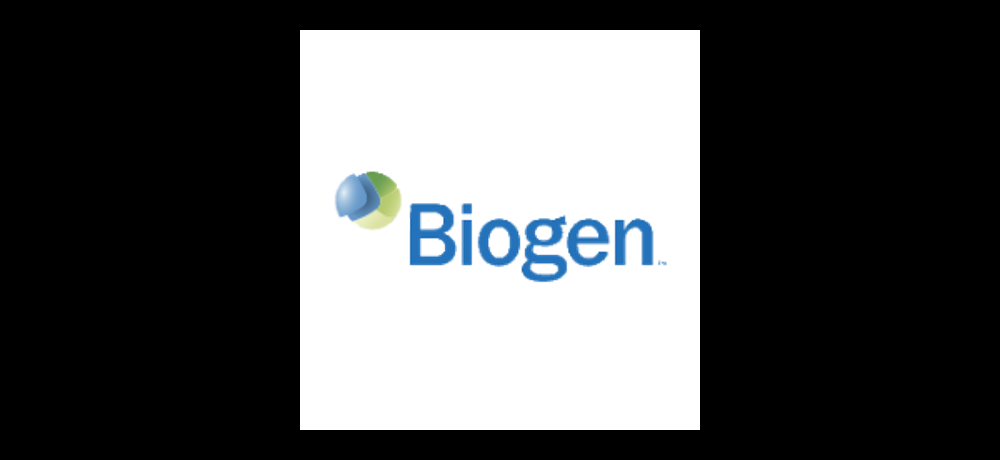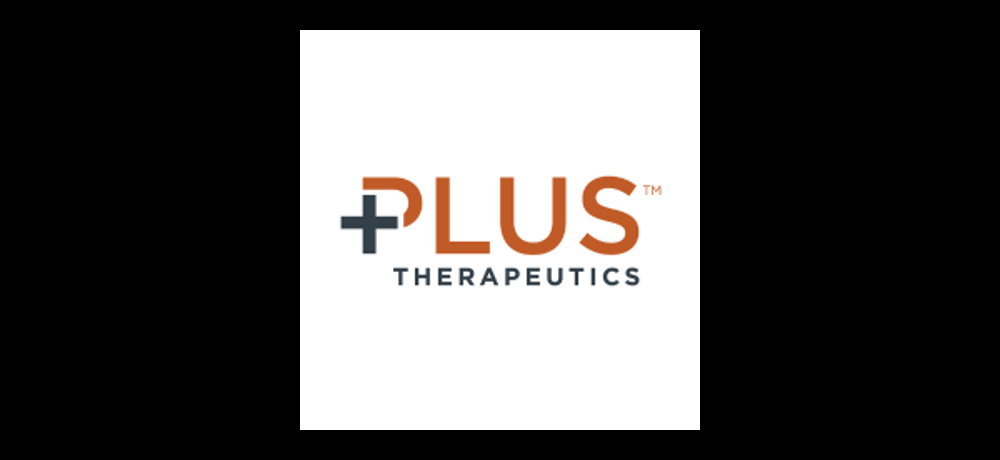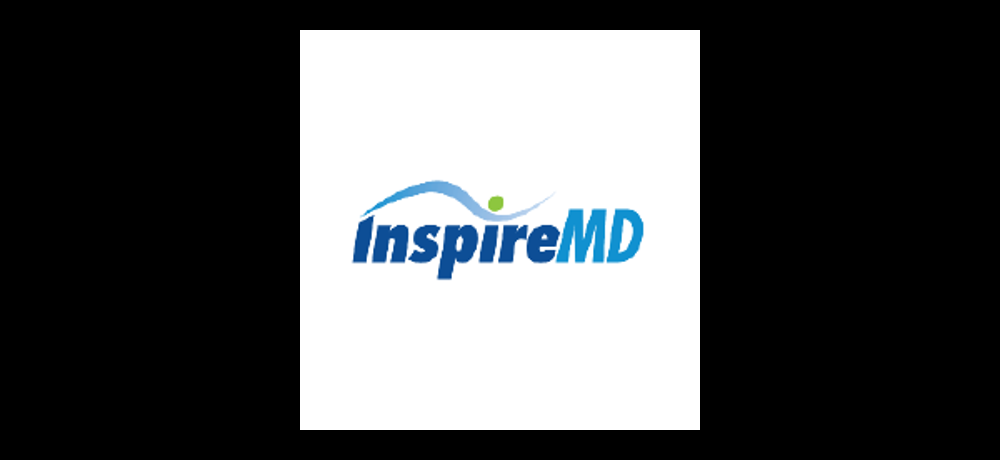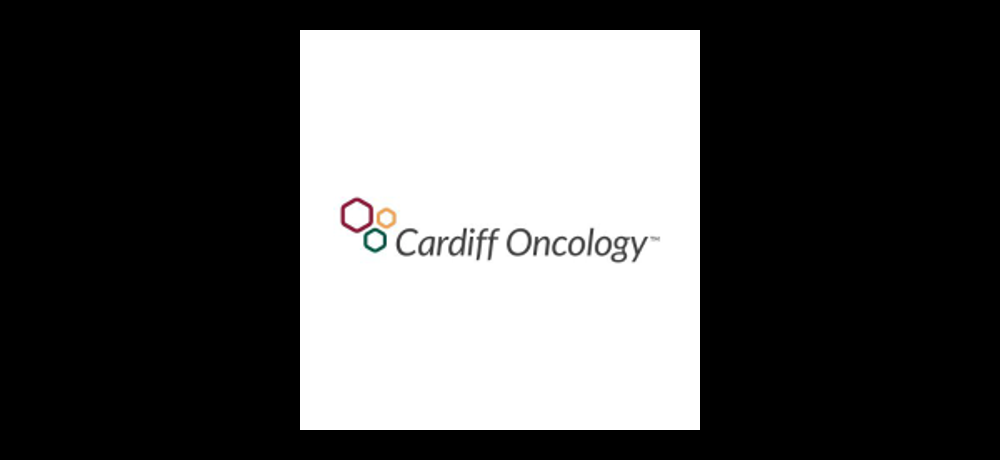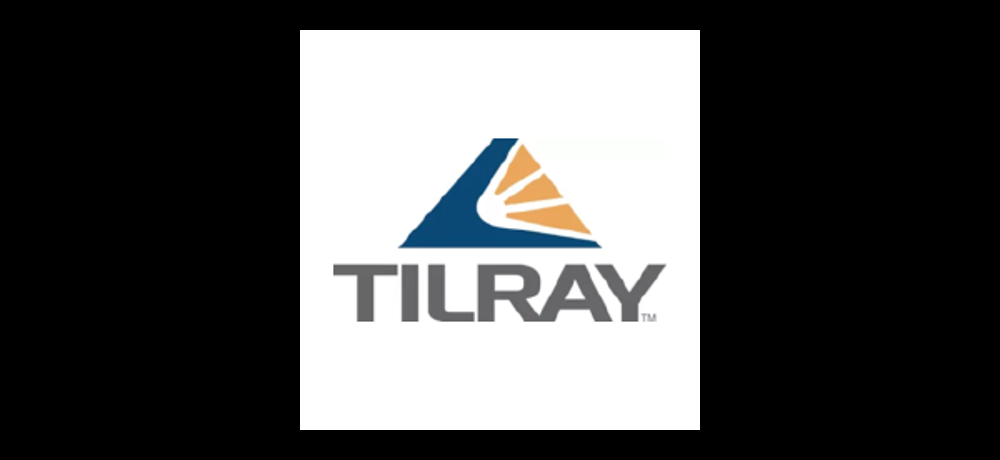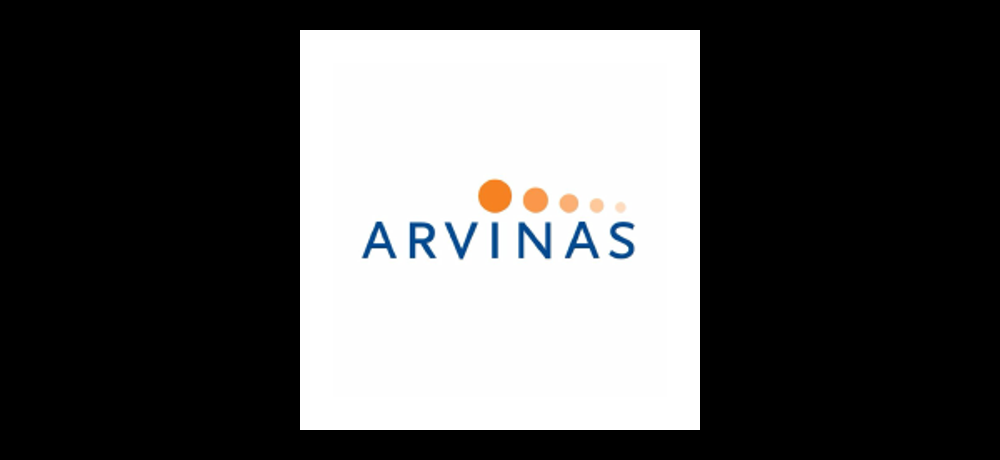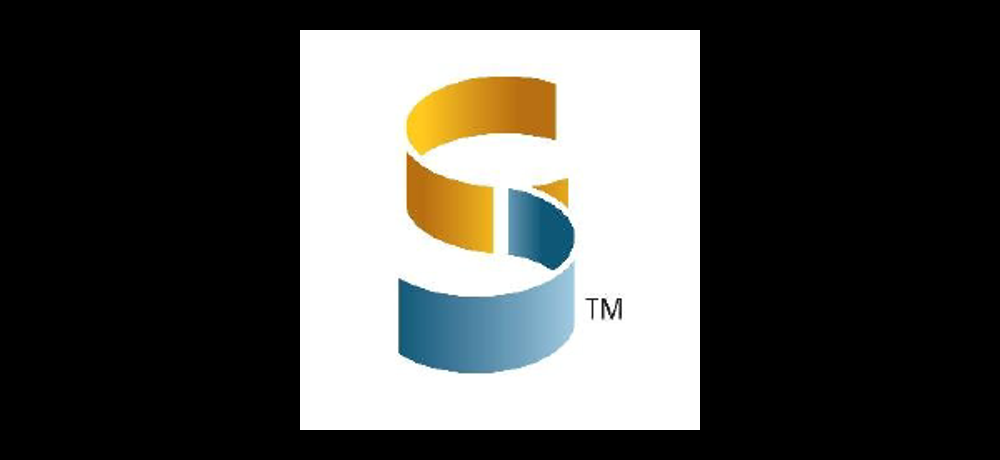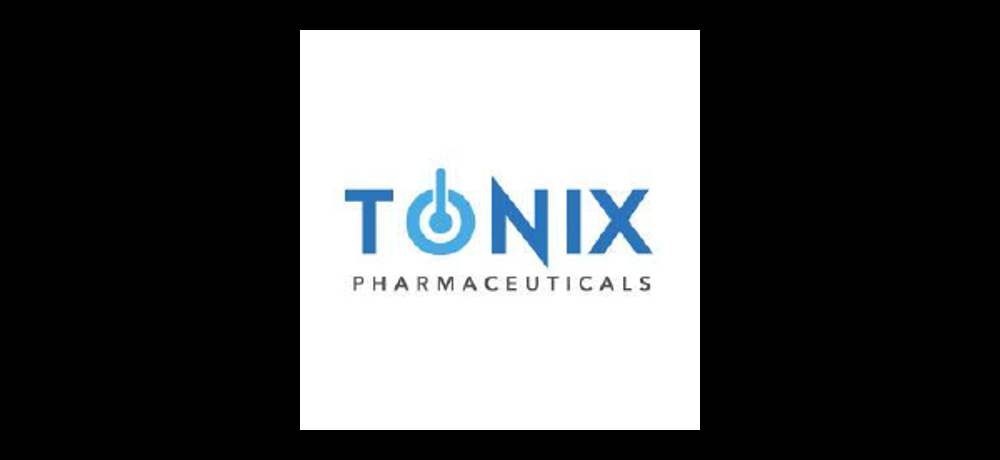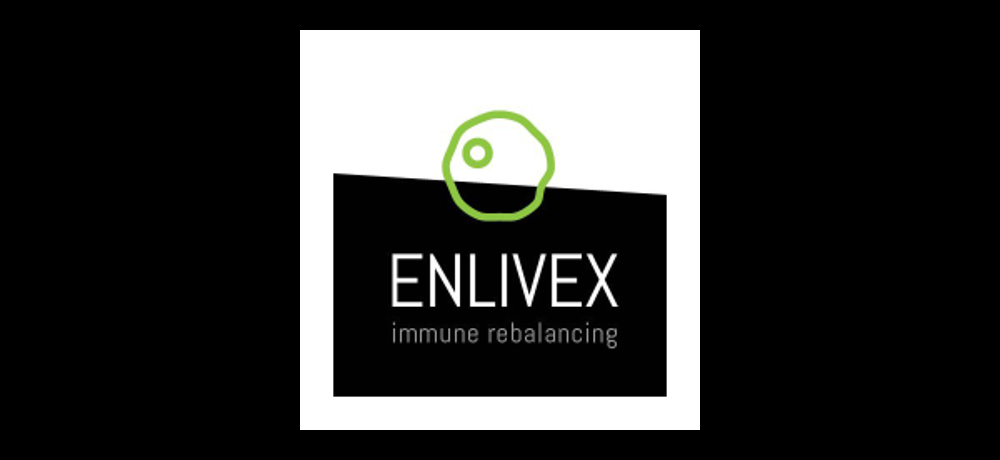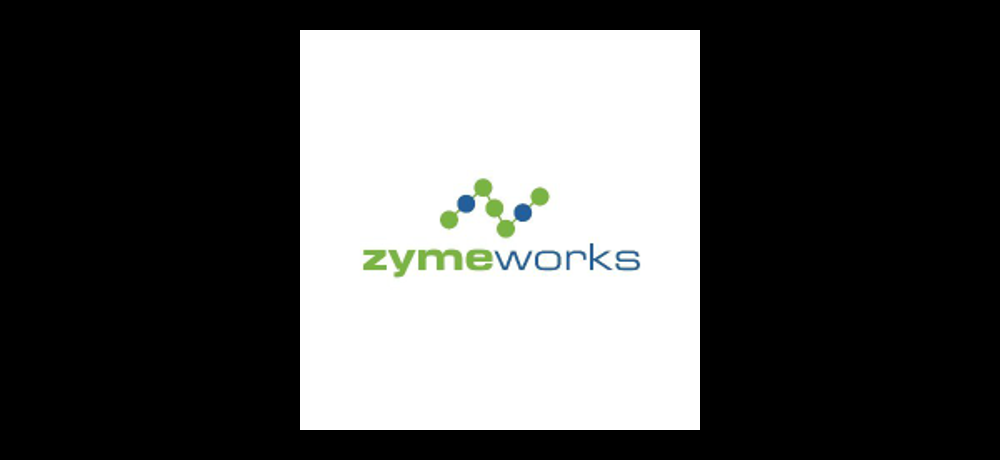Transformation efforts drive performance improvements at Obagi Medical with accelerating revenue
Contrasted performance for Milk Makeup with Q2 2025 net revenue growth driven by U.S. channel expansion and sell-out acceleration but softer performance in Q3 2025 in international markets
Company advances key strategic initiatives, including expansion into medical aesthetics through the Novaestiq acquisition and strengthened balance sheet following the sale of the Obagi Japan trademark and credit facility refinancing
Waldencast updates FY 2025 guidance to reflect current trends and purposeful investments to drive long-term growth
LONDON, Nov. 24, 2025 (GLOBE NEWSWIRE) -- Waldencast plc (NASDAQ: WALD) (“
Waldencast
” or the “
Company
”), a global multi-brand beauty and wellness platform, today reported operating results for the three months ended June 30, 2025 (“
Q2 2025
”), and six months ended June 30, 2025 (“
H1 2025
”), and provided a trading update for the three months ended September 30, 2025 (“
Q3 2025
”) on Form 6-K to the U.S. Securities and Exchange Commission (the “
SEC
”), which are also available on our investor relations site at http://ir.waldencast.com/.
“Through the first nine months of the year, we delivered stable net revenue performance with contrasted results between the brands, while advancing our strategic priorities to drive our long-term growth,” said Michel Brousset, Waldencast Founder and CEO. “In Q2 2025, our net revenue grew 5.6% year-over-year to $66.8 million and we delivered an Adjusted EBITDA Margin of 5.0%. In Q3 2025, our results reflected a contrasted performance across the portfolio. Performance at Obagi Medical continued to be supported by breakthrough innovation and the strengthening of the international business. Milk Makeup continued to grow consumption in the U.S. but faced a more challenging comparison against last year’s exceptionally successful launches, further impacted by softness in international markets.
Obagi Medical
Obagi Medical continued to build on its strong momentum, achieving the leading position in unaided brand awareness within its competitive set
1
. In Q3 2025, net revenue accelerated to double-digit growth, led by exceptionally strong performance in e-commerce channels and in international markets, even as we rationalized our distribution by exiting some distribution points that no longer aligned with our brand ethos. In the Physician Dispensed channel, performance was temporarily muted as we upgrade our go-to-market capabilities, in preparation for the launch into the aesthetics market with Obagi Saypha®, a launch that doubles our addressable market in the U.S.
2
and sets the foundation for future growth and greater operating efficiencies. The out-of-stock challenges that impacted Q1 have eased, and we closed Q3 with significantly improved in-stock levels across the portfolio.
We advanced several important initiatives during Q2 and Q3, including the acquisition of Novaestiq and the U.S. distribution rights for Saypha® fillers. We also secured FDA approval for Obagi® Saypha® MagIQ™ Injectable Hyaluronic Acid Gel under the Obagi Medical brand, an exciting milestone in our long-term strategy to build the world’s leading dermatological megabrand at the intersection of skincare and medical aesthetics.
We also recently announced the sale of the Obagi Japan trademark rights to our longstanding commercial partner, Rohto Pharmaceutical Co. Ltd., for $82.5 million. Combined with the refinancing of our credit facilities, this transaction will significantly reduce our leverage and further strengthen our balance sheet. These achievements underscore the strength of our brands and the disciplined execution of our strategy, as we continue to evaluate a broad range of strategic alternatives aimed at maximizing shareholder value.
Milk Makeup
Following a successful Q1 2025 rollout at Ulta Beauty, Milk Makeup expanded to Amazon Premium Beauty in Q2 2025 and continued to benefit from blockbuster innovations such as Hydro Grip Gel Tint. Year-to-date U.S. consumption increased 12% against 2024, quadruple the rate of growth of the prestige makeup market
3
. Despite these strengths, the brand experienced softer consumption in international markets, which resulted in a year-on-year net revenue decline in Q3 2025.
We are implementing transformation initiatives across the brand to position the business for renewed momentum going into 2026, including restructuring the team and naming Mazdack Rassi, Founder of Milk Makeup, as President to lead the brand into this new stage of growth. We are further prioritizing investment in international markets and brand marketing, increasing innovation pace, and strengthening the brand's operating platform.
Outlook
Our updated full-year outlook reflects Obagi Medical's performance in line with expectations and incorporates a moderated view for Milk Makeup due to softer consumption and continued investment to position the brand for future success. As a result, we now expect net revenue to be broadly in line with 2024 and Adjusted EBITDA Margin in the high single digits.”
Strategic Review
As previously announced, Waldencast’s Board of Directors is conducting a comprehensive review of a broad range of strategic alternatives focused on maximizing shareholder value. To support the evaluation of all potential pathways, the Board has retained Lazard as financial advisor. As part of this review and aligned with our objective to strengthen our balance sheet and sharpen our strategic focus, the Company executed the sale of the Obagi Japan trademark rights.
The Company does not intend to comment further on the status or timing of this process unless and until the Board approves a definitive course of action or determines that additional disclosure is appropriate. Given the broad scope of the review, there can be no assurance that it will result in a transaction or any other specific outcome.
Q2 2025 Results Overview
Please refer to the definitions and reconciliations set out further in this release with respect to certain adjusted non-GAAP measures discussed below which are included to provide an easier understanding of the underlying performance of the business, but should not be seen as a substitute for the U.S. GAAP numbers presented in this release.
For the three months ended June 30, 2025 compared to the three months ended June 30, 2024:
Net Revenue
increased 5.6% year-over-year to $66.8 million.
In Obagi Medical, stable U.S. demand and improved in-stock availability for International distributors led performance in the quarter, moderated by some out-of-stocks on prescription products.
Milk Makeup delivered double digit growth driven by strong consumption in the U.S., retail expansion into Ulta Beauty, and the brand's launch on Amazon Premium Beauty.
|
(In $ millions, except for percentages)
|
|
Q2 2025
|
|
% Sales
|
|
% Growth
|
|
|
Q2 2024
|
|
% Sales
|
|
Waldencast
|
|
|
|
|
|
|
|
|
|
|
|
|
Net Revenue
|
|
66.8
|
|
100.0%
|
|
5.6%
|
|
|
63.3
|
|
100.0%
|
|
Adjusted Gross Profit
|
|
48.1
|
|
71.9%
|
|
1.3%
|
|
|
47.5
|
|
75.0%
|
|
Adjusted EBITDA
|
|
3.3
|
|
5.0%
|
|
(47.3)%
|
|
|
6.3
|
|
10.0%
|
|
|
|
|
|
|
|
|
|
|
|
|
|
|
Obagi Medical
|
|
|
|
|
|
|
|
|
|
|
|
|
Net Revenue
|
|
35.2
|
|
100.0%
|
|
1.9%
|
|
|
34.6
|
|
100.0%
|
|
Adjusted Gross Profit
|
|
27.4
|
|
77.9%
|
|
—%
|
|
|
27.4
|
|
79.3%
|
|
Adjusted EBITDA
|
|
1.8
|
|
5.1%
|
|
(72.3)%
|
|
|
6.5
|
|
18.6%
|
|
|
|
|
|
|
|
|
|
|
|
|
|
|
Milk Makeup
|
|
|
|
|
|
|
|
|
|
|
|
|
Net Revenue
|
|
31.6
|
|
100.0%
|
|
10.0%
|
|
|
28.7
|
|
100.0%
|
|
Adjusted Gross Profit
|
|
20.6
|
|
65.3%
|
|
3.0%
|
|
|
20.0
|
|
69.7%
|
|
Adjusted EBITDA
|
|
5.3
|
|
16.8%
|
|
(6.7)%
|
|
|
5.7
|
|
19.8%
|
H1 2025 Results Overview
For H1 2025 compared to H1 2024:
Net Revenue
increased 0.5% year-over-year to $132.3 million.
Gross Profit
was $92.5 million, while Adjusted Gross Profit totaled $98.1 million, or 74.1% of net revenue, a contraction of 150 basis points compared to the prior year driven mostly by higher off-price sales as we continue to improve our inventory quality.
Net Loss
for H1 2025 was $185.2 million, primarily driven by impairment charges on Obagi Medical and Milk Makeup of $132.1 million and $20.0 million, respectively. As previously announced in August 2025, the Company is conducting a review of its long-term priorities and goodwill valuation. As part of the June 30, 2025 goodwill assessment and aligned with the long range business plan, the Company concluded goodwill was impaired and recorded a charge during H1 2025. Expenses related to the restatement and associated regulatory investigation reduced significantly to $0.7 million, compared to $9.4 million in H1 2024.
Adjusted EBITDA
was $7.7 million, or 5.8% of net revenue, 760 basis points lower than H1 2024.
H1 2025
Highlights
|
(In $ millions, except for percentages)
|
|
H1 2025
|
|
% Sales
|
|
% Growth
|
|
|
H1 2024
|
|
% Sales
|
|
Waldencast
|
|
|
|
|
|
|
|
|
|
|
|
|
Net Revenue
|
|
132.3
|
|
100.0%
|
|
0.5%
|
|
|
131.6
|
|
100.0%
|
|
Adjusted Gross Profit
|
|
98.1
|
|
74.1%
|
|
(1.5)%
|
|
|
99.5
|
|
75.6%
|
|
Adjusted EBITDA
|
|
7.7
|
|
5.8%
|
|
(56.4)%
|
|
|
17.7
|
|
13.4%
|
|
|
|
|
|
|
|
|
|
|
|
|
|
|
Obagi Medical
|
|
|
|
|
|
|
|
|
|
|
|
|
Net Revenue
|
|
71.4
|
|
100.0%
|
|
4.5%
|
|
|
68.4
|
|
100.0%
|
|
Adjusted Gross Profit
|
|
57.1
|
|
80.0%
|
|
4.0%
|
|
|
54.9
|
|
80.3%
|
|
Adjusted EBITDA
|
|
7.7
|
|
10.8%
|
|
(41.8)%
|
|
|
13.2
|
|
19.3%
|
|
|
|
|
|
|
|
|
|
|
|
|
|
|
Milk Makeup
|
|
|
|
|
|
|
|
|
|
|
|
|
Net Revenue
|
|
60.9
|
|
100.0%
|
|
(3.7)%
|
|
|
63.2
|
|
100.0%
|
|
Adjusted Gross Profit
|
|
41.0
|
|
67.3%
|
|
(8.1)%
|
|
|
44.6
|
|
70.6%
|
|
Adjusted EBITDA
|
|
9.7
|
|
15.9%
|
|
(38.4)%
|
|
|
15.7
|
|
24.9%
|
Q3 2025 Trading Update
Please refer to the definitions and reconciliations set out further in this release with respect to certain adjusted non-GAAP measures discussed below which are included to provide an easier understanding of the underlying performance of the business, but should not be seen as a substitute for the U.S. GAAP numbers presented in this release.
For the three months ended September 30, 2025 compared to the three months ended September 30, 2024:
Net Revenue
decreased 3.4% year-over-year to $67.8 million.
Obagi Medical net revenue reached $42.6 million, double digit growth compared to Q3 2024. Performance reflects strong growth in strategic channels, led by U.S. brand controlled e-commerce and international markets, including the U.K., Middle East and Southeast Asia.
Milk Makeup net revenue was $25.2 million, down $6.3 million versus Q3 2024. In the U.S., consumption increased 8%, while the brand also expanded its digital footprint following a successful launch with Amazon Premium Beauty. A better in-stock position for the breakthrough Hydro Grip Gel Tint did not translate into the expected sales growth given a lull in marketing support as a consequence of the Q1 out of stocks. In addition, results for Q3 2025 need to be viewed against a quarter of exceptional performance in Q3 2024, which saw three significant launches and international distribution gains.
Liquidity
As of September 30, 2025, the Company held $14.2 million in cash and cash equivalents.
Outstanding Shares
As of October 31, 2025, we had 127,270,174 ordinary shares outstanding, consisting of 116,903,646 Class A shares and 10,366,528 Class B shares. As of December 31, 2024, we had 122,692,968 ordinary shares outstanding, consisting of 112,026,440 Class A shares and 10,666,528 Class B shares. The increase in share count includes the 3.2 million shares issued upon the FDA approval of the Obagi Saypha® filler as transaction consideration for the Novaestiq acquisition.
|
(In $ millions, except for percentages)
|
|
Q3 2025
|
|
% Growth
|
|
|
Q3 2024
|
|
Waldencast
|
|
|
|
|
|
|
|
|
Net Revenue
|
|
67.8
|
|
(3.4)%
|
|
|
70.2
|
|
|
|
|
|
|
|
|
|
|
Obagi Medical
|
|
|
|
|
|
|
|
|
Net Revenue
|
|
42.6
|
|
10.1%
|
|
|
38.7
|
|
|
|
|
|
|
|
|
|
|
Milk Makeup
|
|
|
|
|
|
|
|
|
Net Revenue
|
|
25.2
|
|
(20.1)%
|
|
|
31.5
|
Fiscal 2025 Outlook
Our updated full-year outlook reflects Obagi Medical's performance in line with expectations and incorporates a moderated expectation for Milk Makeup due to softer consumption and continued investment to position the brand for future success. As a result, we now expect net revenue to be broadly in line with 2024 and Adjusted EBITDA Margin in the high single digits.
We remain confident in our ability to drive sustainable growth on both brands, as we continue to capitalize on and invest in strong innovation, digital capabilities, new distribution channels, and process efficiencies.
Given our high gross margin business model and limited reliance on Asian sourcing, we expect a limited increase in cost of goods with any necessary price adjustments (likely in the low-to-mid single digits) to offset the changing tariff environment.
Conference Call and Q3 Reporting
Management will not host a conference call to discuss these results or publish more detailed results for Q3 2025 as it continues to focus on the ongoing strategic review.
Non-GAAP Financial Measures
In addition to the financial measures presented in this release in accordance with
U.S. GAAP,
Waldencast separately reports financial results on the basis of the measures set out and defined below which are non-GAAP financial measures.
Waldencast
believes the non-GAAP measures used in this release provide useful information to management and investors regarding certain financial and business trends relating to its financial condition and results of operations. Waldencast believes that the use of these non-GAAP financial measures provides an additional tool for investors to use in evaluating ongoing operating results and trends. These non-GAAP measures also provide perspective on how Waldencast’s management evaluates and monitors the performance of the business.
There are limitations to non-GAAP financial measures because they exclude charges and credits that are required to be included in GAAP financial presentation. The items excluded from GAAP financial measures such as net income/loss to arrive at non-GAAP financial measures are significant components for understanding and assessing our financial performance. Non-GAAP financial measures should be considered together with, and not alternatives to, financial measures prepared in accordance with GAAP.
Please refer to definitions set out in the release and the tables included in this release for a reconciliation of these metrics to the most directly comparable GAAP financial measures.
Adjusted Gross Profit
is defined as GAAP gross profit excluding the impact of amortization of the supply agreement and formulation intangible assets, and the amortization of the fair value of the related party liability from the Obagi Medical China Business, which was not acquired by Waldencast at the time of the business combination with Obagi Medical and Milk Makeup (the “
Business Combination
”). The Adjusted Gross Profit reconciliation by Segment for each period is included in the Appendix.
Adjusted Gross Margin
is defined as Adjusted Gross Profit divided by GAAP Net Revenue.
Adjusted EBITDA
is defined as GAAP net income (loss) before interest income or expense, income tax (benefit) expense, depreciation and amortization, and further adjusted for the items as described in the reconciliation below. We believe this information will be useful for investors to facilitate comparisons of our operating performance and better identify trends in our business. Adjusted EBITDA excludes certain expenses that are required to be presented in accordance with GAAP because management believes they are non-core to our regular business. These include non-cash expenses, such as depreciation and amortization, stock-based compensation, the amortization and release of fair value of the related party liability to the Obagi Medical China Business, change in fair value of assets and liabilities, and foreign currency translation loss (gain). In addition, adjustments include expenses that are not related to our underlying business performance including (1) legal, advisory and consultant fees related to the financial restatement of previously issued financial statements and associated regulatory investigation and acquisitions, and (2) other non-recurring costs, primarily tax restructuring costs. The Adjusted EBITDA by Segment for each period is included in the Appendix.
Adjusted EBITDA Margin
is defined as Adjusted EBITDA as a percentage of net revenue. The Adjusted EBITDA Margin reconciliation by Segment for each period is included in the Appendix.
|
(In thousands, except for percentages)
|
|
Three
Months
Ended June
30, 2025
|
|
Three
Months
Ended June
30, 2024
|
|
Six Months
Ended June
30, 2025
|
|
Six Months
Ended June
30, 2024
|
|
Net Loss
|
|
$
|
(164,490
|
)
|
|
$
|
(9,012
|
)
|
|
$
|
(185,226
|
)
|
|
$
|
(12,906
|
)
|
|
Adjusted For:
|
|
|
|
|
|
|
|
|
|
Depreciation and amortization
|
|
|
15,026
|
|
|
|
15,130
|
|
|
|
30,024
|
|
|
|
30,014
|
|
|
Interest expense, net
|
|
|
6,311
|
|
|
|
4,419
|
|
|
|
12,695
|
|
|
|
8,711
|
|
|
Income tax benefit
|
|
|
(10,374
|
)
|
|
|
(1,669
|
)
|
|
|
(8,976
|
)
|
|
|
(2,353
|
)
|
|
Stock-based compensation expense
|
|
|
3,280
|
|
|
|
3,468
|
|
|
|
5,648
|
|
|
|
4,526
|
|
|
Restatement related costs
(1)
|
|
|
467
|
|
|
|
2,515
|
|
|
|
709
|
|
|
|
9,370
|
|
|
Merger and acquisition related costs
(2)
|
|
|
1,363
|
|
|
|
—
|
|
|
|
2,179
|
|
|
|
—
|
|
|
Change in fair value of assets and liabilities
|
|
|
(1,402
|
)
|
|
|
(8,572
|
)
|
|
|
(2,569
|
)
|
|
|
(20,732
|
)
|
|
Amortization and release of related party liability
(3)
|
|
|
—
|
|
|
|
(461
|
)
|
|
|
—
|
|
|
|
(778
|
)
|
|
Loss on impairment of goodwill
|
|
|
152,018
|
|
|
|
—
|
|
|
|
152,018
|
|
|
|
—
|
|
|
Foreign currency translation (gain) loss
|
|
|
(604
|
)
|
|
|
(29
|
)
|
|
|
(1,094
|
)
|
|
|
78
|
|
|
Other non-recurring costs
(4)
|
|
|
1,745
|
|
|
|
546
|
|
|
|
2,298
|
|
|
|
1,754
|
|
|
Adjusted EBITDA
|
|
$
|
3,340
|
|
|
$
|
6,333
|
|
|
$
|
7,706
|
|
|
$
|
17,684
|
|
|
Net Revenue
|
|
$
|
66,832
|
|
|
$
|
63,311
|
|
|
$
|
132,274
|
|
|
$
|
131,582
|
|
|
Net Loss % of Net Revenue
|
|
(246.1
|
)%
|
|
(14.2
|
)%
|
|
(140.0
|
)%
|
|
(9.8
|
)%
|
|
Adjusted EBITDA Margin
|
|
|
5.0
|
%
|
|
|
10.0
|
%
|
|
|
5.8
|
%
|
|
|
13.4
|
%
|
|
(1)
|
Includes mainly legal, advisory and consultant fees related to the financial restatement of the 2020-2022 periods and associated regulatory investigation and the Business Combination.
|
|
(2)
|
Includes legal and advisory fees related to acquisitions, including due diligence and contract negotiations related to merger and acquisition transactions.
|
|
(3)
|
Relates to the fair value of the related party liability for the unfavorable discount to the Obagi Medical China Business as part of the Business Combination.
|
|
(4)
|
Other non-recurring costs not directly attributable to the above categories.
|
|
|
|
Net Debt Position
is defined as the principal outstanding for the 2025 term loan and 2025 revolving credit facility minus the cash and cash equivalents as of September 30, 2025.
|
(In thousands)
|
|
Reconciliation of
Net Carrying
Amount of debt to
Net Debt
|
|
Current portion of long-term debt
|
|
$
|
29,194
|
|
|
Long-term debt
|
|
|
160,752
|
|
|
Net carrying amount of debt
|
|
|
189,946
|
|
|
Adjustments:
|
|
|
|
Add: Unamortized debt issuance costs
|
|
|
10,996
|
|
|
Less: Cash & cash equivalents
|
|
|
(14,245
|
)
|
|
Net Debt
|
|
$
|
186,697
|
|
About Waldencast plc
Founded by Michel Brousset and Hind Sebti, Waldencast’s ambition is to build a global best-in-class beauty and wellness operating platform by developing, acquiring, accelerating, and scaling conscious, high-growth purpose-driven brands. Waldencast’s vision is fundamentally underpinned by its brand-led business model that ensures proximity to its customers, business agility, and market responsiveness, while maintaining each brand’s distinct DNA. The first step in realizing its vision was the Business Combination. As part of the Waldencast platform, its brands will benefit from the operational scale of a multi-brand platform; the expertise in managing global beauty brands at scale; a balanced portfolio to mitigate category fluctuations; asset light efficiency; and the market responsiveness and speed of entrepreneurial indie brands. For more information please visit: https://ir.waldencast.com.
Obagi Medical is an industry-leading, advanced skin care line rooted in research and skin biology, refined with a legacy of over 35 years’ experience. First known as leaders in the treatment of hyperpigmentation with the Obagi Nu-Derm
®
System, Obagi Medical products are designed to address the appearance of premature aging, photodamage, skin discoloration, acne, and sun damage. More information about Obagi Medical is available on the brand’s website at www.obagi.com.
Founded in 2016, Milk Makeup quickly became a cult-favorite among the beauty community for its values of self-expression and inclusion, captured by its signature “Live Your Look”, its innovative formulas, and clean ingredients. The brand creates vegan, cruelty-free, clean formulas and has its Milk Makeup HQ in Downtown NYC. Currently, Milk Makeup offers over 325 products through its U.S. website www.MilkMakeup.com, and retail partners including Sephora globally, Ulta Beauty and Amazon Premium Beauty in the U.S., Lyko in Scandinavia, Space NK and Boots in the United Kingdom and many more.
Cautionary Statement Regarding Forward-Looking Statements
All statements in this release that are not historical, are forward-looking statements made pursuant to the safe harbor provisions of the Private Securities Litigation Reform Act of 1995. Such statements include, but are not limited to, statements about: Waldencast’s performance relating to H1 2025 and Q3 2025 and outlook and guidance for 2025; the outcome of the strategic review initiated by the Board of Directors; our ability to deliver financial results in line with expectations; expectations regarding sales, earnings or other future financial performance and liquidity or other performance measures, including those relating to Novaestiq; our long-term strategy and future operations or operating results; expectations with respect to our industry and the markets in which it operates; future product introductions; and any assumptions underlying any of the foregoing. Words such as “anticipate,” “believe,” “continue,” “could,” “estimate,” “expect,” “intend,” “may,” “plan,” “predict,” “project,” “should,” and “will” and variations of such words and similar expressions are intended to identify such forward-looking statements.
These forward-looking statements are not guarantees of future performance, conditions or results, and involve a number of known and unknown risks, uncertainties, assumptions and other important factors, many of which are outside of our control, that could cause actual results or outcomes to differ materially from those discussed in the forward-looking statements, including, among others: (i) our ability to recognize the anticipated benefits from any acquired business, including the acquisition of Novaestiq; (ii) our ability to successfully implement our management’s plans and strategies; (iii) the outcome of the strategic review initiated by the Company’s Board of Directors which may not result in any transaction or if pursued, may not be completed on attractive terms; (iv) the impact of the material weaknesses in our internal control over financial reporting, including associated investigations, our efforts to remediate such material weakness and the timing of remediation and resolution of associated investigations; (v) the overall economic and market conditions, sales forecasts and other information about our possible or assumed future results of operations or our performance; (v) the general impact of geopolitical events, including the impact of current wars, conflicts or other hostilities; (vi) our ability to manage expenses, our liquidity and our investments in working capital; (vii) any failure to obtain governmental and regulatory approvals related to our business and products; (viii) the impact of any international trade or foreign exchange restrictions, increased tariffs, foreign currency exchange fluctuations; (ix) our ability to raise additional capital or complete desired acquisitions; (x) our ability to comply with financial covenants imposed under our credit facilities and the impact of debt service obligations and restricted debt covenants; (xi) volatility of Waldencast’s securities due to a variety of factors, including Waldencast’s inability to implement its business plans or meet or exceed its financial projections and changes; (xii) the ability to implement business plans, forecasts, and other expectations, and identify and realize additional opportunities; (xiii) the ability of Waldencast to implement its strategic initiatives and continue to innovate Obagi Medical’s and Milk Makeup’s existing products and anticipate and respond to market trends and changes in consumer preferences; (xiv) any shifts in the preferences of consumers as to where and how they shop; (xv) the impact of any unfavorable publicity on our business or products; (xvi) changes in future exchange or interest rates or credit ratings; (xviii) our ability to comply with laws, regulations, and policies, including as a result of any changes thereto; and (xix) social, political and economic conditions. These and other risks, assumptions and uncertainties are more fully described in the Risk Factors section of our 2024 20-F (File No. 01-40207), filed with the SEC on March 20, 2025, and in our other documents that we file or furnish with the SEC, which you are encouraged to read.
Should one or more of these risks or uncertainties materialize, or should underlying assumptions prove incorrect, actual results may vary materially from those indicated or anticipated by such forward-looking statements. Accordingly, you are cautioned not to rely on these forward-looking statements, which speak only as of the date they are made. Waldencast expressly disclaims any current intention, and assumes no duty, to update publicly any forward-looking statement after the distribution of this release, whether as a result of new information, future events, changes in assumptions or otherwise.
Contacts:
Investors
ICR
waldencastir@icrinc.com
Media
ICR
waldencast@icrinc.com
Appendix
Adjusted Gross Profit
|
|
|
Group
|
|
(In thousands, except for percentages)
|
|
Three Months
Ended June 30,
2025
|
|
Three Months
Ended June 30,
2024
|
|
Six Months
Ended June 30,
2025
|
|
Six Months
Ended June 30,
2024
|
|
Net Revenue
|
|
$
|
66,832
|
|
|
$
|
63,311
|
|
|
$
|
132,274
|
|
|
$
|
131,582
|
|
|
Gross Profit
|
|
|
45,265
|
|
|
|
44,593
|
|
|
|
92,469
|
|
|
|
94,178
|
|
|
Gross Profit Margin
|
|
|
67.7
|
%
|
|
|
70.4
|
%
|
|
|
69.9
|
%
|
|
|
71.6
|
%
|
|
Gross Margin Adjustments:
|
|
|
|
|
|
|
|
|
|
Amortization of the fair value of the related party liability
(1)
|
|
|
—
|
|
|
|
(461
|
)
|
|
|
—
|
|
|
|
(778
|
)
|
|
Discontinued product write-off
(2)
|
|
|
—
|
|
|
|
526
|
|
|
|
—
|
|
|
|
526
|
|
|
Amortization of intangible assets
(3)
|
|
|
2,801
|
|
|
|
2,801
|
|
|
|
5,603
|
|
|
|
5,603
|
|
|
Adjusted Gross Profit
|
|
$
|
48,066
|
|
|
$
|
47,459
|
|
|
$
|
98,072
|
|
|
$
|
99,529
|
|
|
Adjusted Gross Margin %
|
|
|
71.9
|
%
|
|
|
75.0
|
%
|
|
|
74.1
|
%
|
|
|
75.6
|
%
|
|
(1)
|
Relates to the fair value of the related party liability for the unfavorable discount to the Obagi Medical China Business as part of the Business Combination.
|
|
(2)
|
Relates to the advanced purchase of specific products for the market in Vietnam sold through the Vietnam distributor that became obsolete when the contract was terminated.
|
|
(3)
|
The supply agreement and formulations intangible assets are amortized to cost of goods sold.
|
|
|
|
Obagi Medical
|
|
Milk Makeup
|
|
(In thousands, except for percentages)
|
|
Three
Months
Ended June
30, 2025
|
|
Three
Months
Ended June
30, 2024
|
|
Six Months
Ended June
30, 2025
|
|
Six Months
Ended June
30, 2024
|
|
Three
Months
Ended June
30, 2025
|
|
Three
Months
Ended June
30, 2024
|
|
Six Months
Ended June
30, 2025
|
|
Six Months
Ended June
30, 2024
|
|
Net Revenue
|
|
$
|
35,249
|
|
|
$
|
34,597
|
|
|
$
|
71,416
|
|
|
$
|
68,364
|
|
|
$
|
31,583
|
|
|
$
|
28,714
|
|
|
$
|
60,858
|
|
|
$
|
63,218
|
|
|
Gross Profit
|
|
|
24,646
|
|
|
|
24,582
|
|
|
|
51,497
|
|
|
|
49,570
|
|
|
|
20,619
|
|
|
|
20,011
|
|
|
|
40,972
|
|
|
|
44,608
|
|
|
Gross Profit Margin
|
|
|
69.9
|
%
|
|
|
71.1
|
%
|
|
|
72.1
|
%
|
|
|
72.5
|
%
|
|
|
65.3
|
%
|
|
|
69.7
|
%
|
|
|
67.3
|
%
|
|
|
70.6
|
%
|
|
Gross Margin Adjustments:
|
|
|
|
|
|
|
|
|
|
|
|
|
|
|
|
|
|
Amortization of the fair value of the related party liability
|
|
|
—
|
|
|
|
(461
|
)
|
|
|
—
|
|
|
|
(778
|
)
|
|
|
—
|
|
|
|
—
|
|
|
|
—
|
|
|
|
—
|
|
|
Discontinued product write-off
|
|
|
—
|
|
|
|
526
|
|
|
|
—
|
|
|
|
526
|
|
|
|
—
|
|
|
|
—
|
|
|
|
—
|
|
|
|
—
|
|
|
Amortization of intangible assets
|
|
|
2,801
|
|
|
|
2,801
|
|
|
|
5,603
|
|
|
|
5,603
|
|
|
|
—
|
|
|
|
—
|
|
|
|
—
|
|
|
|
—
|
|
|
Adjusted Gross Profit
|
|
$
|
27,447
|
|
|
$
|
27,448
|
|
|
$
|
57,100
|
|
|
$
|
54,921
|
|
|
$
|
20,619
|
|
|
$
|
20,011
|
|
|
$
|
40,972
|
|
|
$
|
44,608
|
|
|
Adjusted Gross Margin %
|
|
|
77.9
|
%
|
|
|
79.3
|
%
|
|
|
80.0
|
%
|
|
|
80.3
|
%
|
|
|
65.3
|
%
|
|
|
69.7
|
%
|
|
|
67.3
|
%
|
|
|
70.6
|
%
|
Adjusted EBITDA Margin by Segment
|
|
|
Obagi Medical
|
|
Milk Makeup
|
|
(In thousands, except for percentages)
|
|
Three
Months
Ended June
30, 2025
|
|
Three
Months
Ended June
30, 2024
|
|
Six Months
Ended June
30, 2025
|
|
Six Months
Ended June
30, 2024
|
|
Three
Months
Ended June
30, 2025
|
|
Three
Months
Ended June
30, 2024
|
|
Six Months
Ended June
30, 2025
|
|
Six Months
Ended June
30, 2024
|
|
Net Income (Loss)
|
|
$
|
(137,433
|
)
|
|
$
|
(5,674
|
)
|
|
$
|
(146,489
|
)
|
|
$
|
(11,435
|
)
|
|
$
|
(19,834
|
)
|
|
$
|
(414
|
)
|
|
$
|
(20,837
|
)
|
|
$
|
4,926
|
|
|
Adjusted For:
|
|
|
|
|
|
|
|
|
|
|
|
|
|
|
|
|
|
Depreciation and amortization
|
|
|
10,422
|
|
|
|
10,395
|
|
|
|
20,842
|
|
|
|
20,790
|
|
|
|
4,605
|
|
|
|
4,735
|
|
|
|
9,182
|
|
|
|
9,224
|
|
|
Interest expense (income), net
|
|
|
6,174
|
|
|
|
3,135
|
|
|
|
9,559
|
|
|
|
6,322
|
|
|
|
(3
|
)
|
|
|
60
|
|
|
|
(6
|
)
|
|
|
5
|
|
|
Income tax (benefit) expense
|
|
|
(10,390
|
)
|
|
|
(1,671
|
)
|
|
|
(9,021
|
)
|
|
|
(2,357
|
)
|
|
|
10
|
|
|
|
—
|
|
|
|
35
|
|
|
|
—
|
|
|
Stock-based compensation expense
|
|
|
132
|
|
|
|
(204
|
)
|
|
|
(394
|
)
|
|
|
(985
|
)
|
|
|
543
|
|
|
|
1,191
|
|
|
|
1,111
|
|
|
|
1,549
|
|
|
Restatement related costs
(1)
|
|
|
(296
|
)
|
|
|
289
|
|
|
|
(107
|
)
|
|
|
755
|
|
|
|
—
|
|
|
|
—
|
|
|
|
—
|
|
|
|
—
|
|
|
Merger and acquisition related costs
(2)
|
|
|
—
|
|
|
|
—
|
|
|
|
—
|
|
|
|
—
|
|
|
|
—
|
|
|
|
—
|
|
|
|
—
|
|
|
|
—
|
|
|
Change in fair value of assets and liabilities
|
|
|
3
|
|
|
|
—
|
|
|
|
18
|
|
|
|
—
|
|
|
|
—
|
|
|
|
—
|
|
|
|
—
|
|
|
|
—
|
|
|
Amortization and release of related party liability
(3)
|
|
|
—
|
|
|
|
(461
|
)
|
|
|
—
|
|
|
|
(778
|
)
|
|
|
—
|
|
|
|
—
|
|
|
|
—
|
|
|
|
—
|
|
|
Loss on impairment of goodwill
|
|
|
132,058
|
|
|
|
—
|
|
|
|
132,058
|
|
|
|
—
|
|
|
|
19,960
|
|
|
|
—
|
|
|
|
19,960
|
|
|
|
—
|
|
|
Foreign currency translation loss
|
|
|
180
|
|
|
|
97
|
|
|
|
211
|
|
|
|
197
|
|
|
|
37
|
|
|
|
124
|
|
|
|
179
|
|
|
|
20
|
|
|
Other non-recurring costs
(4)
|
|
|
935
|
|
|
|
546
|
|
|
|
1,008
|
|
|
|
685
|
|
|
|
—
|
|
|
|
—
|
|
|
|
63
|
|
|
|
—
|
|
|
Adjusted EBITDA
|
|
$
|
1,785
|
|
|
$
|
6,451
|
|
|
$
|
7,685
|
|
|
$
|
13,194
|
|
|
$
|
5,317
|
|
|
$
|
5,696
|
|
|
$
|
9,687
|
|
|
$
|
15,724
|
|
|
Net Revenue
|
|
$
|
35,249
|
|
|
$
|
34,597
|
|
|
$
|
71,416
|
|
|
$
|
68,364
|
|
|
$
|
31,583
|
|
|
$
|
28,714
|
|
|
$
|
60,858
|
|
|
$
|
63,218
|
|
|
Net Income (Loss) % of Net Revenue
|
|
(389.9) %
|
|
(16.4) %
|
|
(205.1) %
|
|
(16.7) %
|
|
(62.8) %
|
|
(1.4) %
|
|
(34.2) %
|
|
|
7.8
|
%
|
|
Adjusted EBITDA Margin
|
|
|
5.1
|
%
|
|
|
18.6
|
%
|
|
|
10.8
|
%
|
|
|
19.3
|
%
|
|
|
16.8
|
%
|
|
|
19.8
|
%
|
|
|
15.9
|
%
|
|
|
24.9
|
%
|
|
|
|
Central costs
|
|
(In thousands, except for percentages)
|
|
Three
Months
Ended June
30, 2025
|
|
Three
Months
Ended June
30, 2024
|
|
Six Months
Ended June
30, 2025
|
|
Six Months
Ended June
30, 2024
|
|
Net Loss
|
|
$
|
(7,224
|
)
|
|
$
|
(2,924
|
)
|
|
$
|
(17,900
|
)
|
|
$
|
(6,397
|
)
|
|
Adjusted For:
|
|
|
|
|
|
|
|
|
|
Interest expense, net
|
|
|
140
|
|
|
|
1,224
|
|
|
|
3,142
|
|
|
|
2,384
|
|
|
Income tax expense
|
|
|
7
|
|
|
|
2
|
|
|
|
10
|
|
|
|
4
|
|
|
Stock-based compensation expense
|
|
|
2,605
|
|
|
|
2,481
|
|
|
|
4,931
|
|
|
|
3,962
|
|
|
Restatement related costs
(1)
|
|
|
763
|
|
|
|
2,226
|
|
|
|
816
|
|
|
|
8,615
|
|
|
Merger and acquisition related costs
(2)
|
|
|
1,363
|
|
|
|
—
|
|
|
|
2,179
|
|
|
|
—
|
|
|
Change in fair value of assets and liabilities
|
|
|
(1,406
|
)
|
|
|
(8,572
|
)
|
|
|
(2,587
|
)
|
|
|
(20,732
|
)
|
|
Foreign currency translation gain
|
|
|
(821
|
)
|
|
|
(251
|
)
|
|
|
(1,484
|
)
|
|
|
(139
|
)
|
|
Other non-recurring costs
(4)
|
|
|
810
|
|
|
|
—
|
|
|
|
1,227
|
|
|
|
1,069
|
|
|
Adjusted EBITDA
|
|
$
|
(3,763
|
)
|
|
$
|
(5,814
|
)
|
|
$
|
(9,666
|
)
|
|
$
|
(11,234
|
)
|
|
Net Revenue
|
|
$
|
—
|
|
|
$
|
—
|
|
|
$
|
—
|
|
|
$
|
—
|
|
|
Net Loss % of Net Revenue
|
|
N/A
|
|
N/A
|
|
N/A
|
|
N/A
|
|
Adjusted EBITDA Margin
|
|
N/A
|
|
N/A
|
|
N/A
|
|
N/A
|
|
(1)
|
Includes mainly legal, advisory and consultant fees related to the financial restatement of the 2020-2022 periods and associated regulatory investigation and the Business Combination.
|
|
(2)
|
Includes legal and advisory fees related to acquisitions, including due diligence and contract negotiations related to merger and acquisition transactions.
|
|
(3)
|
Relates to the fair value of the related party liability for the unfavorable discount to the Obagi Medical China Business as part of the Business Combination.
|
|
(4)
|
Other non-recurring costs not directly attributable to the above categories.
|
1
Google's AdMob, sample: 6,280 women survey via AdMob from July 1, 2025 to July 3, 2025.
2
In preparing for the Novaestiq acquisition, Waldencast engaged management consulting services from a reputed global consulting firm. Obagi Saypha® ChIQ remains subject to FDA approval.
3
Circana. "US Beauty Industry Sales Accelerate in Q3, Circana Reports." Circana. November 18, 2025. https://www.circana.com/post/us-beauty-industry-sales-accelerate-in-q3-circana-reports.



